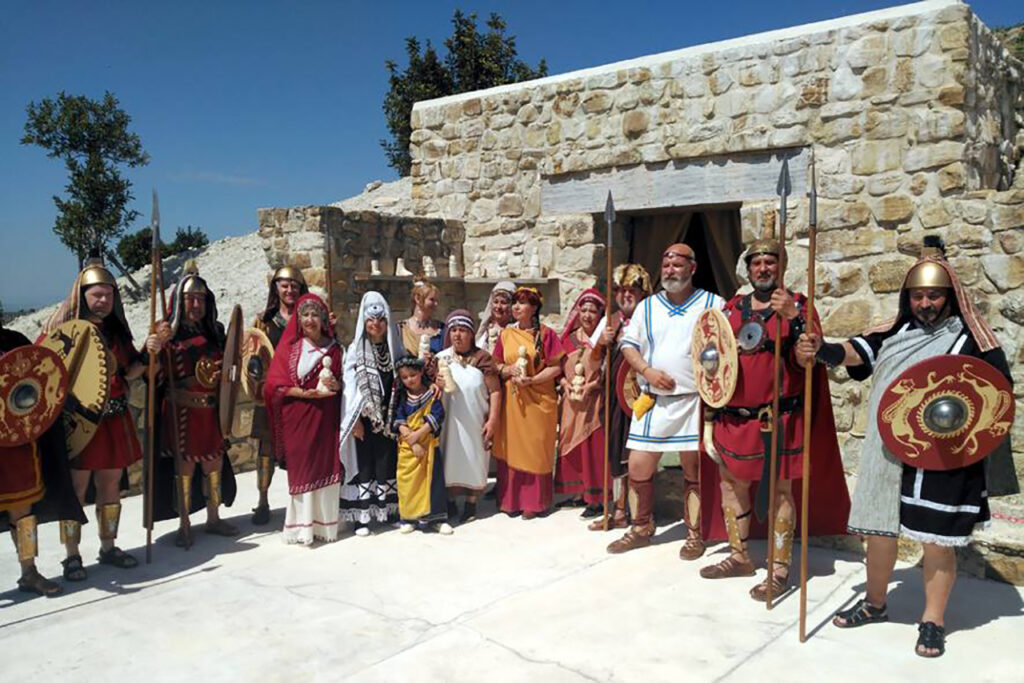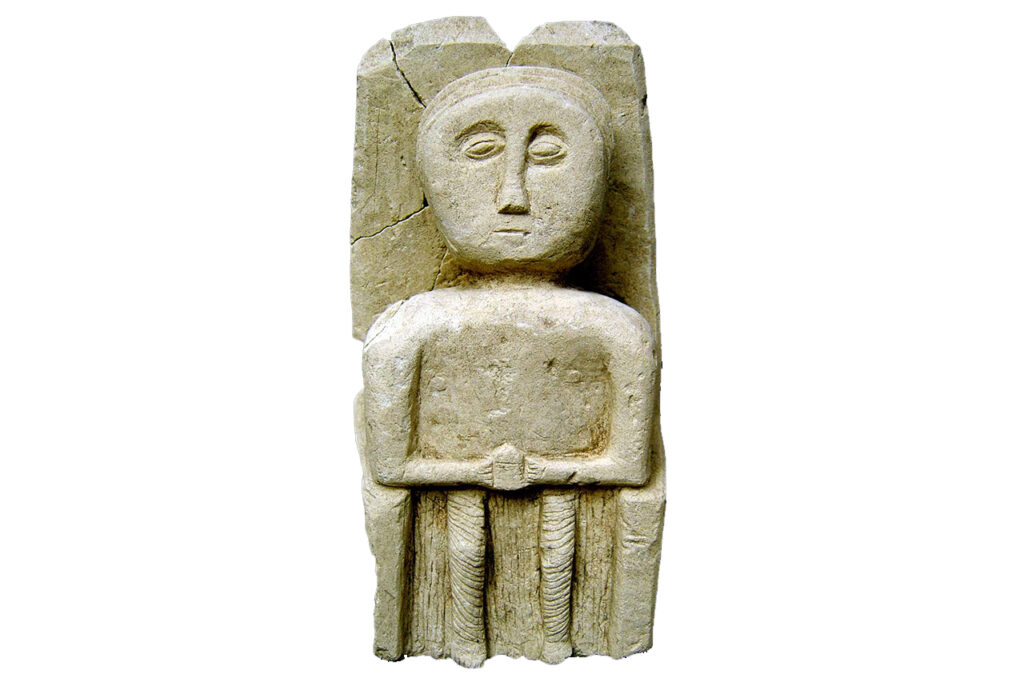
The Sanctuary
The Torreparedones sanctuary is located outside the walled enclosure, at the southern end of the site. Its archaeological record actually corresponds to the structures of two religious buildings, the second one being the most interesting in chronological order. This sanctuary is a clear example of the fusion between indigenous and Roman religiosity that maintained a good part of the local traditions.
The first temple could date back to the Republican Roman period, with the second falling into the High Imperial period. It consists of three spaces, one to the north, like a cella, which was the most sacred area, with a rectangular floor plan with a maximum preserved height of 2.5 m. with the walls made of regular ashlar joined with mortar, and in front, to the south, a large open-air patio with opus signinum pavement, in which a stone bench was discovered in 1988 next to which there were dozens of stone votive offerings. For its part, in 2007, a rectangular masonry structure covered in opus signinum was discovered on the opposite side that could be interpreted as a table intended for animal sacrifice. Finally, further south, there is a small vestibule that was entered through a ramp or staircase.
At the back of the cella, on the north wall, a column was attached with its corresponding capital decorated with eight almond leaves. It was a sacred betyl, the representation of the divinity worshiped in the temple, which in this case was Dea Caelestis, the Punic Tanit who must have received worship in this place from the mid-1st century BC to the 2nd century AD when it was abandoned. and destruction of the religious building.
Among the most significant finds are numerous pieces of ceramics, two altars carved from local limestone and more than 300 votive offerings also made from local stone.

Historical reenactment in the sanctuary.

Seated votive offering found in the sanctuary.
Some ancient cults
The North-South distribution, divided into three levels that the faithful ascended progressively by means of an access ramp, seems to have an astronomical purpose. First they arrived at a hall whose entrance, as appears from a relief preserved in the Cañete de las Torres museum, was flanked by two thick columns with zoomorphic capitals; then inside an open patio and, finally, to the cella, a sacred place where the image of the divinity was found.
Taking into account the astronomical orientation of the temple and that the cella was underground, with a cover as a terrace that could be visited and a door that could be closed, leaving it in darkness, the hypothesis has been raised that a small skylight would have been placed on the roof. that would allow the passage of a beam of light that would illuminate the sacred betil every half solar day. On the winter solstice (December 21) it would point to the capital and as the year progressed the beam of light would travel through the betil until it touched its base with the summer solstice (June 21); Then I would do the reverse route. In short, along with the magical and symbolic meaning of the ray of light on the image of the divinity (Dea Caelestis – Juno Lucina), we would have to consider the possibility that it also served as a solar calendar controlled by the priest, where there could be marks (painted or incised) to indicate the key days of the year such as changes of seasons, holidays, etc.
The Torreparedones votive offerings that represent, above all, anthropomorphic figures (female and also male), parts of the body (legs), are manifestations of piety and religious beliefs, the nature of which remains to be discovered, but which are limited to being a exposition of the feeling towards divinity, and should be understood as offerings made in thanksgiving for a favor received, which usually consisted of the healing of a sick member of the body (legs is what has been found the most) or any other illness, even of births without problems for mother and child, so it is possible that the goddess was venerated under the title of Juno Lucina, patron saint of Roman women in labor and whose festival took place on March 1.
In the sanctuary, an Iberian female divinity was worshiped, which later perhaps transformed into Tanit, the most important Carthaginian goddess, associated, as was the case in other cultures, with the mother goddess, fertility or the moon. With Romanization, Tanit was renamed Caelestis, later identified with Juno, a deity along with Jupiter and Minerva, protector of the Roman State.
Juno became very popular among Roman women, who, under the worship of Juno Lucina, made her the patron saint of pregnant women and childbirth. In relation to this cult, a large part of the votive offerings found in the sanctuary corresponded to representations of pregnant women, sometimes naked, imploring the goddess who brings children to light, for a problem-free birth.